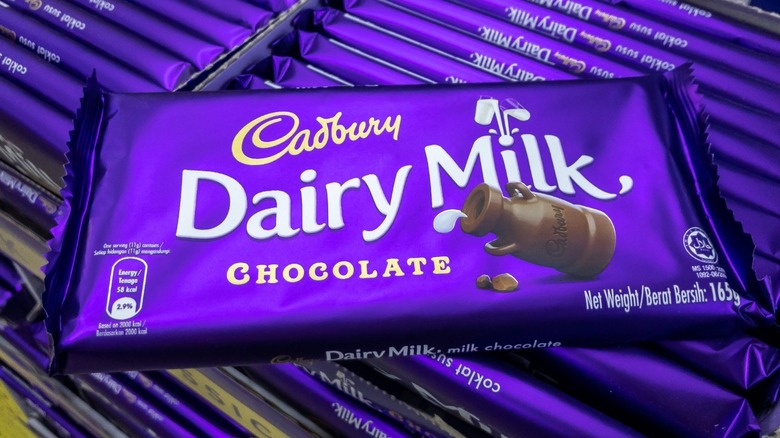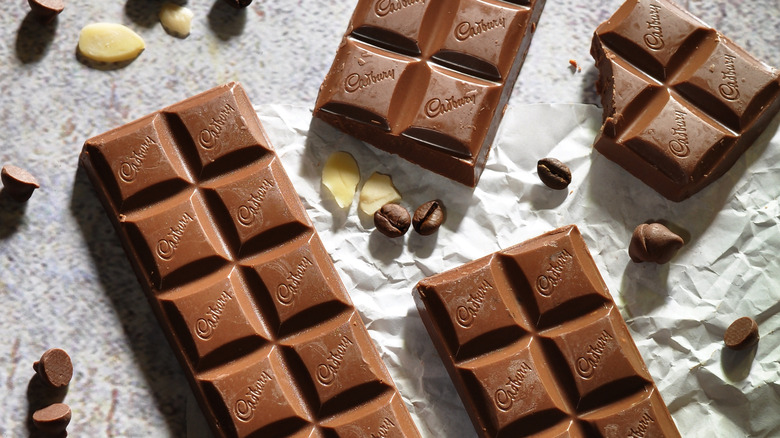The Real Reason Cadbury Is Changing Its Packaging In The UK
Before anyone panics that the iconic purple and gold packaging of the beloved UK Cadbury Chocolate brand has disappeared from shelves, the packaging change is one that could make some people cheer. Although the beloved candy brand first packaged its Dairy Milk in boxes back in the 1890s, the company's branding has changed over the years (per The Packaging Company). From removing the gold foil to focusing on plastic to aid freshness, the imagery might look similar but their materials evolved. In 2021, Confectionery News reported that the company committed to using up to 30% recycled plastic in its packaging. While all those changes were well received by consumers, the latest packaging innovation might help keep those chocolate cravings more manageable.
According to The Mirror, Cadbury has introduced a "memory technology solution" in the UK that allows the candy bars to be resealed after opening. Although this packaging innovation might not seem like the greatest thing since sliced bread, the twist-and-seal wrappers seem to avoid food waste and help with portion control. Cadbury Boost, Cadbury Dairy Milk, Cadbury Double Decker, Cadbury Wispa, and Cadbury Wispa Gold will all be wrapped in the new packaging, which was first released in January 2022 (via Packaging Europe). While Cadbury cannot influence someone's willpower, this new packaging could make it easier to save a square for another time.
Can Cadbury's new candy packaging encourage mindful snacking?
When Cadbury debuted its new twist-and-seal wrappers, Kelly Lawrence, Cadbury's brand manager, said, "We're so excited to announce the new twist wrap packaging for our Duos range this year" (via The Mirror). She also said that the brand has "put a lot of time and investment into portionable packaging as a way of empowering consumers to snack in a more mindful way" and noted that they were "excited to see" what customers would think of the new product.
The idea of mindful snacking has been discussed by candy brands previously. For example, the National Confectioners Association's Always a Treat program in America committed to making at least half of their individually-wrapped products available to buyers in sizes with 200 calories or less by this year. These packaging changes look to keep candy in the hands of consumers but give them the choice to modify portions. Whether it is a twist-and-seal wrapper, individual packages, or something else, mindful snacking might be a thoughtful idea. However, a person's willpower needs to close that package before the candy wrapper is empty.

